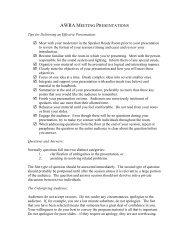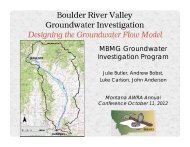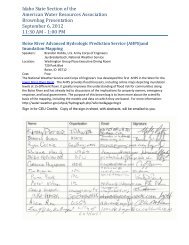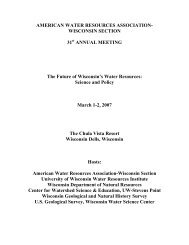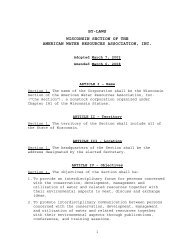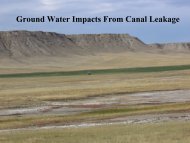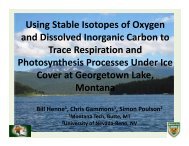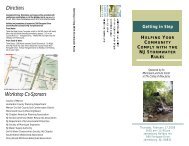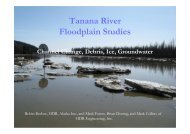Wisconsin's Role in Great Lakes Restoration - American Water ...
Wisconsin's Role in Great Lakes Restoration - American Water ...
Wisconsin's Role in Great Lakes Restoration - American Water ...
Create successful ePaper yourself
Turn your PDF publications into a flip-book with our unique Google optimized e-Paper software.
Slow-Release Fertilizer Effect on Groundwater Nitrogen Concentration <strong>in</strong> Sandy Soils<br />
under Potato Production<br />
**Nicholas J. Bero, University of Wiscons<strong>in</strong>-Madison, Madison, WI, njbero@wisc.edu<br />
Matt D. Ruark, University of Wiscons<strong>in</strong>-Madison, Madison, WI mdruark@wisc.edu<br />
Birl Lowery, University of Wiscons<strong>in</strong>-Madison, Madison, WI blowery@wisc.edu<br />
Current nitrogen (N) fertilizer management practices for potato farm<strong>in</strong>g have led to elevated<br />
levels of N <strong>in</strong> the local groundwater. Slow-release fertilizer, specifically Environmentally Smart<br />
Nitrogen® (ESN) may reduce the amount of N leach<strong>in</strong>g to groundwater; however no field<br />
scale studies have been performed <strong>in</strong> Wiscons<strong>in</strong> to validate these assertions. Field<br />
experiments were conducted at the Hancock Agricultural Research Station us<strong>in</strong>g Russet<br />
Burbank potato, planted <strong>in</strong> Pla<strong>in</strong>field Loamy sand. Four fertilizer rates, 0 N control, 224 kg ha -1<br />
ESN, 280 kg ha -1 ESN, and current University of Wiscons<strong>in</strong>-Extension recommended 280 kg<br />
ha -1 ammonium sulfate-ammonium nitrate (AS-AN) were used. Day of plant<strong>in</strong>g was April 29,<br />
with fertilizer applied twice, once at plant emergence on May 17, and the second application<br />
on June 2, 2010. This study <strong>in</strong>cluded three replicates to create twelve 15.24 m by 15.24 m<br />
field plots. Three monitor<strong>in</strong>g wells spaced diagonally across plot, were <strong>in</strong>stalled <strong>in</strong> each plot to<br />
sample groundwater for N assessment. Potato plant growth parameters and yields were<br />
measured. Groundwater sampl<strong>in</strong>g regime was weekly throughout the grow<strong>in</strong>g season and<br />
monthly afterward assessed for nitrate, ammonium and total N. In general, results <strong>in</strong>dicate<br />
that ESN reduced the amount of nitrate leach<strong>in</strong>g to groundwater. Potato growth parameters<br />
and yields were ma<strong>in</strong>ta<strong>in</strong>ed, and demonstrates that use of slow-release ESN fertilizer is a<br />
reasonable alternative to current management practices of AS-AN applications. Fall<br />
application of Br - and Cl - tracers <strong>in</strong>dicated that no cross contam<strong>in</strong>ation of N occurred and plot<br />
sizes were large enough to be representative of full scale fields.<br />
** Graduate student presentation<br />
53






